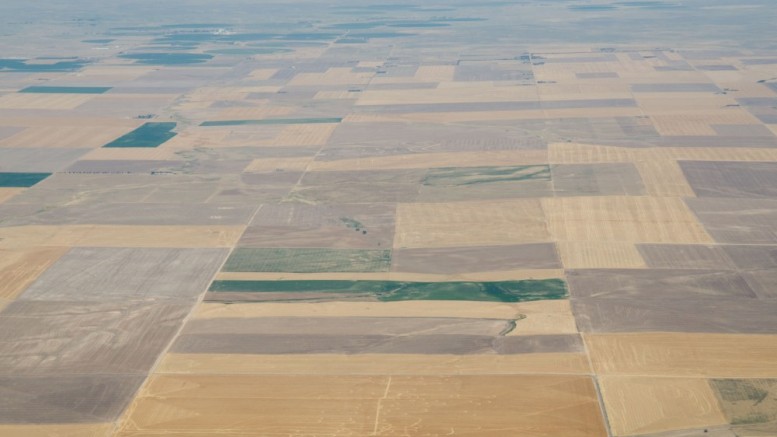If the dry weather in the U.S. continues, it could turn out to be “the worst drought of our generation,” CIBC analyst Jacob Bout writes in a 196-page industry report, noting that damage to the corn crop so far this year is “somewhere between 1988 and 1991.”
Agrium (AGU-T, AGU-N) is his top large-cap pick in the sector because of its exposure to the U.S. corn story and higher nitrogen price assumptions, along with “increased nitrogen production with debottlenecking.” The Toronto-based analyst resumed coverage of the company on July 18 and raised his 12- to 18-month price target on the stock from US$103 to US$122 per share.
“We believe the current U.S. drought [resulting in corn crop deterioration and yield estimates as low as 130 bushels per acre] is positive for the nitrogen industry, as it will take two large corn crops to get back to historical inventories [with a stock-to-use ratio of 15% to 20%],” he explains in a research note.
Bout approves of Agrium’s pending acquisition of 232 of 258 retail centres owned by Viterra in Western Canada, and expects the deal will receive government approval. (In March Agrium announced that it had entered an agreement with Glencore International (GLEN-L) to acquire 90% of Viterra’s Canadian retail facilities, all of its Australian retail facilities and its 34% stake in CF Industries (CF-N) nitrogen facility in Medicine Hat, Alta. The $1.65-billion deal is contingent on Glencore’s acquisition of Viterra, which Bout expects will go through in August.
Bout reasons that acquiring Viterra’s retail centres in Western Canada and Southern Australia will boost its market share from 5% to between 35% and 36% in the former, and to 30% in the latter. And if Agrium acquires the 34% stake in the nitrogen facility in Medicine Hat — which has a capacity of 720,000 tonnes of ammonia and 740,000 tonnes of urea — it would boost the company’s grip on the nitrogen market in Western Canada to 54%, from 45% currently.
Agrium also plans to expand capacity at its Borger and Redwater nitrogen facilities, the research analyst points out, and is considering building a greenfield nitrogen plant in the U.S. corn belt with an estimated start-up date in 2017. A decision whether to go ahead with the project will be made by the middle of next year.
But while Bout expects the bullish agriculture market will continue for at least two years, and that resurging grain prices will brighten prospects for crop-nutrient companies like Agrium, he does not believe the same can be said for suppliers for potash, which he believes is a commodity likely to remain in surplus for the next four years. He also argues nitrogen pricing is most responsive during drought years, and believes that with a larger corn crop forecast in 2013–2014, demand for nitrogen should remain strong.
“Looking back at nutrient prices during the drought of 1988 we find that nitrogen prices are the most responsive nutrient following a severe drought [and also corn prices],” he writes. “In 1988, U.S. Gulf urea prices increased nearly 15% from March to November, while potash and diammonium phosphate prices remained relatively flat. Intuitively this makes sense, since nitrogen needs to be applied every year while phosphate and potash nutrients will likely carry over in the soil.”
Over the next four years Bout forecasts potash will remain in surplus given slowing global demand, which he expects to be flat or down slightly year-on-year in 2012. He also asserts that oncoming brownfield capacity between 2011 and 2014 will likely add 10 million tonnes of effective capacity, and expects year-on-year potash prices to remain flat.
Bout has cut his potash price assumption for this year to US$439 per tonne FOB mine from US$463 per tonne and from US$511 per tonne FOB mine to US$442 per tonne in 2013, and forecasts prices will reach US$550 per tonne by 2020.
“As global demand is expected to remain flat year-over-year [India is sitting on the sidelines and distributors are unwilling to restock], we expect potash pricing to follow suit,” he explains in a separate research note on Potash Corp. “While an uptick in consumption is expected in China and Brazil, we expect this to be offset by lower demand in India, and to a smaller extent in the U.S.”
Bout lowered his price targets on shares of Potash Corp. of Saskatchewan (POT-T, POT-N) from US$60 to US$54, and for Mosaic (MOS-N) from US$78 to US$73 per share.


Be the first to comment on "US drought: a benefit to fertilizer companies?"